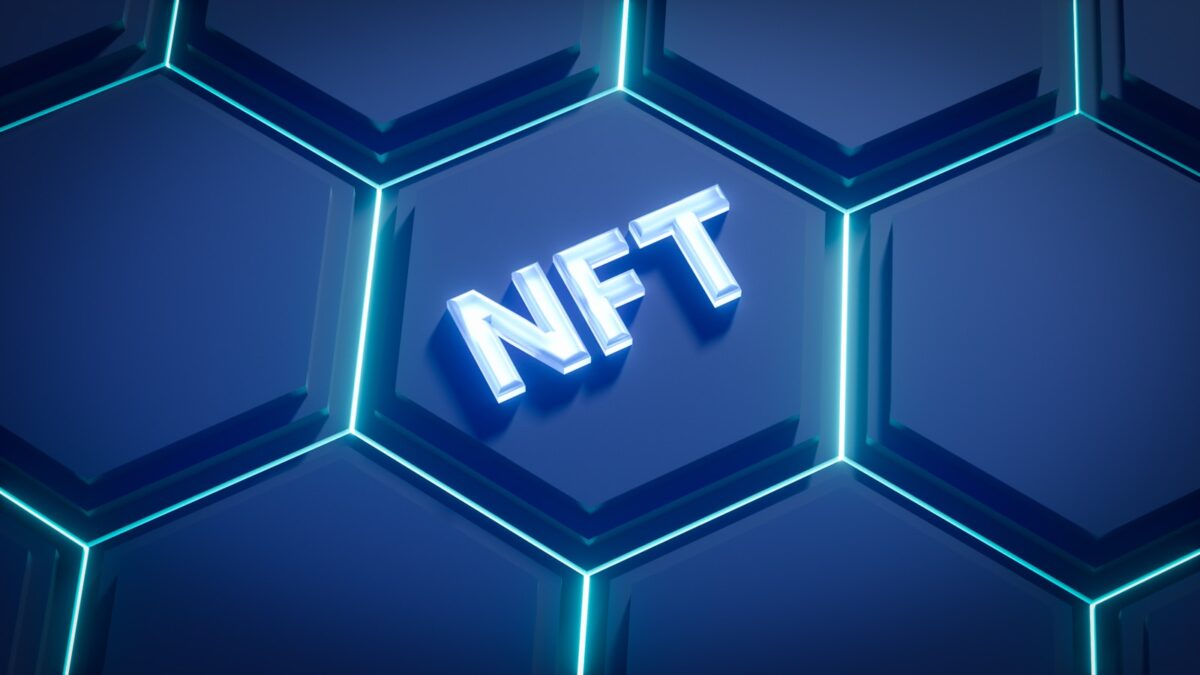
Cryptocurrency scalability solutions

To significantly increase transaction throughput without compromising decentralization, implementing layer-2 protocols is imperative. These off-chain methods process transactions outside the main blockchain, alleviating on-chain congestion and boosting overall network performance. State channels and rollups exemplify such approaches, enabling rapid microtransactions while settling final states securely on-chain.
Sharding presents another promising avenue by partitioning the network into smaller segments capable of processing transactions in parallel. This division effectively multiplies capacity, allowing simultaneous execution without overloading any single shard. Exploring cross-shard communication mechanisms remains critical to maintaining consistency across the distributed ledger.
Combining these strategies–off-chain computations with on-chain consensus–creates a multi-layered architecture that addresses bottlenecks inherent in base-layer protocols. Continuous experimentation with hybrid models offers pathways to scalable networks that sustain increasing demand while preserving security guarantees essential for decentralized systems.
Cryptocurrency scalability solutions
To enhance network capacity and throughput, implementing sharding is a highly effective approach. Sharding partitions the blockchain into smaller segments, or shards, each capable of processing transactions independently. This segmentation increases parallelism, allowing multiple shards to handle transactions simultaneously without overloading the entire system. Ethereum 2.0’s transition to a sharded architecture exemplifies how this method can multiply transaction throughput while maintaining decentralization and security.
Off-chain techniques also play a pivotal role in improving performance by relocating transaction processing away from the main chain. Layer-2 protocols such as the Lightning Network for Bitcoin or Plasma for Ethereum enable faster and cheaper operations by settling numerous micro-transactions off-chain before finalizing results on the primary ledger. These mechanisms reduce congestion and increase overall network efficiency without compromising trustlessness.
Advanced methodologies to improve throughput and capacity
Layer-2 scaling frameworks exploit state channels, rollups, and sidechains to alleviate on-chain load. State channels permit two parties to transact privately off-chain with only opening and closing states recorded on the mainnet, significantly boosting speed while preserving security guarantees. Rollups bundle large batches of transactions into compressed proofs validated on-chain; Optimistic Rollups rely on fraud proofs whereas ZK-Rollups use zero-knowledge proofs to confirm correctness efficiently.
The trade-offs between different approaches become evident when evaluating latency, decentralization, and complexity. While sharding enhances base-layer parallelism directly within the protocol, it introduces challenges related to cross-shard communication and consensus synchronization. Off-chain methods ease immediate transactional pressure but depend heavily on smart contract correctness and user participation in dispute resolution processes.
- Sharding: On-chain partitioning increasing parallel transaction processing capacity.
- State Channels: Instantaneous off-chain exchanges with minimized mainnet interactions.
- Rollups: Aggregation of multiple transactions into succinct proofs submitted periodically.
- Sidechains: Independent blockchains interoperating with the main network for specialized tasks.
A comprehensive understanding emerges when comparing throughput metrics: Bitcoin’s base layer handles approximately 7 TPS (transactions per second), whereas Lightning Network can scale up to millions of TPS off-chain. Ethereum’s current performance hovers around 15–30 TPS, but with rollup adoption combined with sharding plans, projections estimate upward of thousands TPS sustainably. These figures illustrate how layered architectures synergistically elevate operational bandwidth beyond native chain limits.
The evolving ecosystem demands continuous experimental evaluation of these strategies under real-world conditions. Researchers monitor how network congestion levels affect confirmation times across layers, while developers refine cryptographic protocols enabling more efficient validation with minimal overhead. Engaging in testnets or simulation tools provides practical insights into trade-offs between throughput enhancements and security assurances inherent in each technique.
This layered progression from hypothesis–can partitioning improve capacity?–to verified implementation showcases an iterative discovery process fundamental for advancing blockchain networks’ practical utility. By systematically exploring architectural variants like sharding integrated with sophisticated off-chain computations, it becomes possible to architect systems that achieve both high performance and robust decentralization simultaneously.
Layer 1 Protocol Upgrades
Improving transaction throughput and network capacity directly within the base protocol remains a primary avenue for increasing blockchain performance. Layer 1 upgrades enhance the ability of the core system to process more transactions per second by optimizing consensus algorithms, adjusting block sizes, or introducing parallelization techniques. For instance, Ethereum’s transition from Proof of Work to Proof of Stake with its Beacon Chain integration has reduced energy consumption while aiming to increase throughput and overall network efficiency.
Sharding represents a fundamental architectural change designed to partition the entire network into smaller segments that process transactions concurrently. Each shard handles a subset of the total transaction load, thus multiplying effective capacity without compromising security. Experimental implementations on platforms like Near Protocol demonstrate how sharding can significantly reduce latency and improve processing rates by distributing computational tasks across independent shards.
Technical Mechanisms Behind Layer 1 Enhancements
One approach involves increasing block size or frequency, which allows more data to be included in each cycle, thereby raising raw throughput. However, larger blocks can introduce propagation delays and centralization risks due to hardware demands. Balancing these trade-offs requires rigorous testing and adaptive protocols such as Bitcoin Cash’s adjustable block size or Solana’s high-performance architecture that leverages specialized hardware for validation acceleration.
Integrating off-chain data commitments into Layer 1 also elevates effectiveness by reducing on-chain load. Rollups operate by executing transactions off-chain while posting succinct proofs back onto the main chain for finality and security assurance. This hybrid method preserves decentralization while multiplying transaction capacity without modifying the fundamental protocol rules extensively.
Consensus algorithm improvements further contribute to enhanced network operation. Transitioning from energy-intensive mechanisms towards Byzantine Fault Tolerant or Delegated Proof of Stake models can shorten confirmation times and boost throughput. Cardano’s Ouroboros protocol demonstrates how mathematically verifiable slot leadership assignments provide deterministic finality with improved scalability compared to traditional PoW systems.
The interplay between these technical upgrades forms an experimental framework where combined methods reinforce each other’s benefits. Sharding reduces individual node workload; optimized consensus accelerates agreement; off-chain execution lightens transaction pressure–all converging toward greater transactional capacity embedded directly within the primary blockchain infrastructure.
Layer 2 Payment Channels
Layer-2 payment channels represent a practical method to enhance network throughput by conducting multiple transactions off-chain, thereby increasing overall capacity without burdening the main blockchain. These channels establish a bi-directional state channel between two participants, enabling instant transfers with minimal fees while only requiring two on-chain transactions: one to open the channel and another to close it. This mechanism effectively bypasses the base layer’s performance constraints, offering a substantial boost in transaction volume that directly addresses limitations inherent to single-chain processing.
By shifting numerous interactions off-chain, these channels alleviate congestion traditionally managed through sharding or other on-chain scaling techniques. For instance, the Lightning Network built atop Bitcoin exemplifies this approach by allowing millions of micropayments per second across its network of nodes. Such off-chain arrangements not only reduce latency but also enable near-instant settlements, which are critical for real-time applications such as point-of-sale payments or streaming services where traditional block finality proves insufficient.
The architecture of payment channels hinges on cryptographic commitments ensuring security and trustlessness even outside the main ledger. Participants exchange signed messages representing updated balances within the channel; at any moment, either party can broadcast the latest state on-chain to finalize funds distribution. This design maintains decentralization while optimizing performance metrics like throughput and confirmation times. Moreover, combining these channels into networks allows indirect payments routing through intermediaries, further expanding transactional reach without compromising efficiency or security.
While promising, layer-2 payment channels must be evaluated against factors such as liquidity requirements and channel management overhead. Maintaining sufficient capacity in each channel demands careful balancing strategies to prevent bottlenecks or failed payments. Experimental deployments reveal trade-offs between channel lifespan and operational complexity; automated rebalancing protocols continue evolving to address these challenges. Nonetheless, when integrated thoughtfully with sharding and other advanced techniques, payment channels form a robust component in enhancing blockchain ecosystems’ transaction-handling capabilities.
Sharding Implementation Challenges
Addressing network throughput limitations requires careful consideration of sharding’s impact on overall capacity and performance. Sharding divides the network into smaller partitions, each processing transactions independently, theoretically increasing transaction throughput linearly with the number of shards. However, practical implementation faces obstacles such as cross-shard communication overhead, which can degrade performance if not optimized. The necessity for synchronous state validation across shards complicates consensus mechanisms, potentially introducing latency that offsets expected throughput gains.
Off-chain mechanisms and layer-2 frameworks attempt to complement sharding by offloading transactional load from the main network, yet integrating these with shard coordination presents compatibility challenges. For example, ensuring atomicity and finality of transactions spanning multiple shards often requires complex protocols that introduce bottlenecks or risk security vulnerabilities. The interplay between on-chain shard execution and off-chain processing layers demands robust architecture design to maintain consistency without sacrificing speed.
Technical Barriers in Cross-Shard Communication
One major hurdle is achieving efficient cross-shard transaction routing while preserving security guarantees. Transactions involving assets or data across multiple shards necessitate a reliable messaging protocol that avoids double-spending and race conditions. Implementations like Ethereum 2.0’s beacon chain coordinate shard states but incur synchronization delays affecting real-time responsiveness. Research into asynchronous cross-shard communication protocols aims to reduce waiting times; however, they require advanced cryptographic proofs such as zk-SNARKs or optimistic rollups to verify correctness without centralization risks.
The trade-off between isolation and interconnectivity remains a critical design question: full isolation maximizes individual shard throughput but hampers composability, while tight coupling increases communication complexity and potential congestion points within the network fabric.
Consensus Complexity and Security Considerations
Sharded networks must adapt consensus algorithms to function securely in a distributed environment segmented by shards. Traditional Proof-of-Stake (PoS) or Byzantine Fault Tolerant (BFT) models face scalability limits when validators operate on partial state sets restricted to their shard. This fragmentation introduces attack vectors such as single-shard takeover or collusion among validators controlling specific partitions. To mitigate this, random validator assignment and frequent reshuffling are employed but at the cost of increased overhead and potential performance degradation.
Moreover, maintaining finality across all shards simultaneously challenges existing consensus designs due to varying confirmation times per shard, complicating global state synchronization essential for trustless operation across the entire ecosystem.
Data Availability and Storage Burden
The distribution of ledger data among shards reduces storage requirements per node but raises concerns regarding data availability attacks where malicious actors withhold shard-specific data segments. Ensuring consistent access demands additional protocols such as erasure coding or data availability sampling that increase computational complexity and network traffic. These measures impact overall performance metrics by adding verification steps before accepting a transaction’s validity within a shard.
The balance between lightweight node operation and resilient data propagation forms a delicate part of sharding’s architectural decisions influencing long-term sustainability of decentralized networks handling large volumes of transactions daily.
Conclusion: Advancing Cross-Chain Network Performance
Enhancing transaction throughput across multiple blockchains demands a strategic combination of layer-2 techniques and off-chain frameworks to extend network capacity without compromising security. Implementing sharding mechanisms alongside inter-chain communication protocols enables partitioned data processing, which directly elevates performance by distributing workload across distinct shards while preserving consensus integrity.
Off-chain channels such as state and payment channels reduce on-chain congestion by handling microtransactions externally, thus increasing effective throughput and lowering latency. Concurrently, cross-chain bridges facilitate asset transfers and data exchange between heterogeneous networks, expanding functional interoperability while balancing transaction finality risks.
- Layer-2 rollups aggregate numerous transactions into succinct proofs that settle on the main chain, dramatically improving scalability by compressing transactional data.
- Sharding architectures divide the blockchain into parallel segments, each processing subsets of transactions independently to multiply overall network capacity.
- Cross-chain messaging protocols synchronize state changes securely among diverse blockchains, enabling coherent multi-network applications with scalable throughput.
The interplay between these approaches reveals a layered model where off-chain methods alleviate immediate bottlenecks while sharding and optimized consensus algorithms enhance foundational capacity. Future developments should prioritize adaptive shard reconfiguration combined with trust-minimized cross-network validation schemes to maintain consistency under dynamic load conditions.
This modular paradigm encourages experimental deployments testing varied combinations of off-chain scaling and inter-shard coordination for specific use cases–ranging from decentralized finance to supply chain tracking–allowing empirical evaluation of throughput gains versus security trade-offs. Researchers are invited to explore parameter tuning in real-world testnets to quantify how evolving cryptographic proofs and network topologies jointly impact end-to-end performance across interconnected ecosystems.


